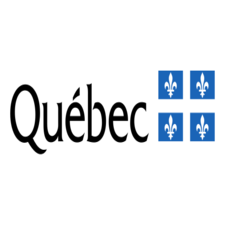Outflow
Type of resources
Topics
Keywords
Contact for the resource
Provided by
Formats
Representation types
Update frequencies
status
-

Please note that a web service is currently under development and will be launched in the fall of 2025. Stay on the lookout! ## #Avertissement :### ### #Le broadcaster cannot guarantee the accuracy, precision, or completeness of the data nor can it be held responsible for the conclusions that arise from their use. This data has no legal value. #### The Geobase of the Quebec Hydrographic Network at High Resolution (GRHQ-HR) offers an up-to-date representation of the hydrographic network with very high precision (scale of 1/2,000). This repository, produced from lidar data, is offered by hydrographic division unit (UDH). The deployment of this geobase is carried out progressively by levels of completeness (NC). Ultimately, it will cover the territory of southern Quebec. During the deployment phase of the repository, [the Quebec Hydrographic Network Geobase (GRHQ)] (https://www.donneesquebec.ca/recherche/fr/dataset/grhq), the GRHQ-HR as well as [potential flow beds] (https://www.donneesquebec.ca/recherche/dataset/lits-d-ecoulements-potentiels-issus-du-lidar) from the lidar will be simultaneously available on Data Quebec for this portion of the territory. The GRHQ-HR includes a 3D linear geometric network, which represents the continuity and direction of flow in all types of aquatic entities (streams, lakes, wetlands, etc.). This network is created by modeling potential flow beds and completed by central flow lines (simplified representation of hydrographic surfaces in central lines). This geobase is part of a strategy to update the cartographic map of Quebec's hydrography. It was carried out in partnership with the Ministry of the Environment, the Fight against Climate Change, Wildlife and Parks (MELCCFP). # #Caractéristiques UDH completion levels## Each level of completeness characterizes the level of work, editing, validation, and descriptive content of the datasets. Thematic and toponymic data will enhance the datasets. ### #NC -1 (primary geometric network) #### * Potential and filamentary flow beds derived from hydrographic, oriented, and topological surfaces. * Priority level defined (allows network analyses). * Presence of certain basic attributes (sustainability, network connection, accumulation of flows, Strahler and Horton orders, distance from upstream, distance from downstream). * Linear reference system (road numbers, vertex M coordinates). * Hydrographic surfaces of the GRHQ on a scale of 1/20,000 (2D). * Presence of some toponyms as an attribute. * Hydrocoherent digital terrain models (GeoTIFF). * Flow accumulation matrices (GeoTIFF). * Flow direction matrices (GeoTIFF). ### #NC -2 (enhanced geometric network) #### * NC-1 features. * Update of hydrographic surfaces by photogrammetry. * Correction of errors in the path of potential flow beds and update of downstream filamentaries. * Partial addition of thematic hydrographic data (dams, falls, reefs, islands, wetlands, rapids). * Lidar survey date index. * Topological nesting of matrices. * Update of hydrocoherent numerical terrain models. * Update of flow direction matrices. * Update of flow accumulation matrices. ### #NC -3 (thematic bonus) #### * Characteristics of the NC-2. * Hydrographic themes completed (breakwaters, quays). * Addition of toponyms. ### #NC -4 (improvement of toponymic content) #### * NC-3 features. * Continuity of toponymic data on geometries. * Addition of named entities. **This third party metadata element was translated using an automated translation tool (Amazon Translate).**
-

__The link: * Access the data directory* is available in the section*Dataset description sheets; Additional information*__. Hydrographic derivatives from LiDAR (Light Detection and Ranging) were produced as part of the provincial LiDAR sensor data acquisition project. These products provide information on the geographical position of water flow beds on the territory as well as their nature (permanent or intermittent watercourse). These layers represent the path that water should take depending on the topography. It is therefore a potential flow bed that does not take into account the nature of the surface deposit or underground pipes. These vector layers are preliminary and do not replace reference hydrographic layers such as the Quebec Hydrographic Network Geobase (GRHQ). They are primarily used to support forest operations. These layers will also be improved over the coming years thanks to a collective effort by two ministries, namely the Ministry of Natural Resources and Forests (MRNF) and the Ministry of the Environment, the Fight against Climate Change, and Wildlife and Parks (MELCCFP). Data on potential flow beds are distributed, as of March 2022, by water drainage unit (UDH), a division that respects the natural boundaries of the watershed. This division uses the same codes and approximately the same spatial limits of the UDHs of the GRHQ. Data for each UDH is available in Geodatabase (GDB) or GeoPackage (GPKG) format.**This third party metadata element was translated using an automated translation tool (Amazon Translate).**
-

High-resolution relief data produced from LiDAR surveys and limited to crop plots are particularly useful in the agricultural sector since they make it possible to model surface drainage in order to identify drainage problems or the risks of soil erosion. Agronomic interpretation will take advantage of this information not only in the form of the numerical terrain model and the shading, but also with the level curves, flow paths and basins located inside the cultivated plots, as delimited by the database of declared agricultural plots and productions (BDPPAD) of the Financière Agricole du Québec (FADQ). Level curves of 1 m covering the entire treated territory excluding cultivated plots (agricultural, forest, urban, etc.) are also available. These new data are the result of a collaboration between the MRNF and the MAPAQ, and they are offered thanks to the open valorization of data initially derived from LiDAR to the MRNF Forest Inventory Directorate (DIF). We hope that this data will support better soil and water management interventions, in order to mitigate the consequences of climate change, and to promote sustainable agriculture.**This third party metadata element was translated using an automated translation tool (Amazon Translate).**
 Arctic SDI catalogue
Arctic SDI catalogue